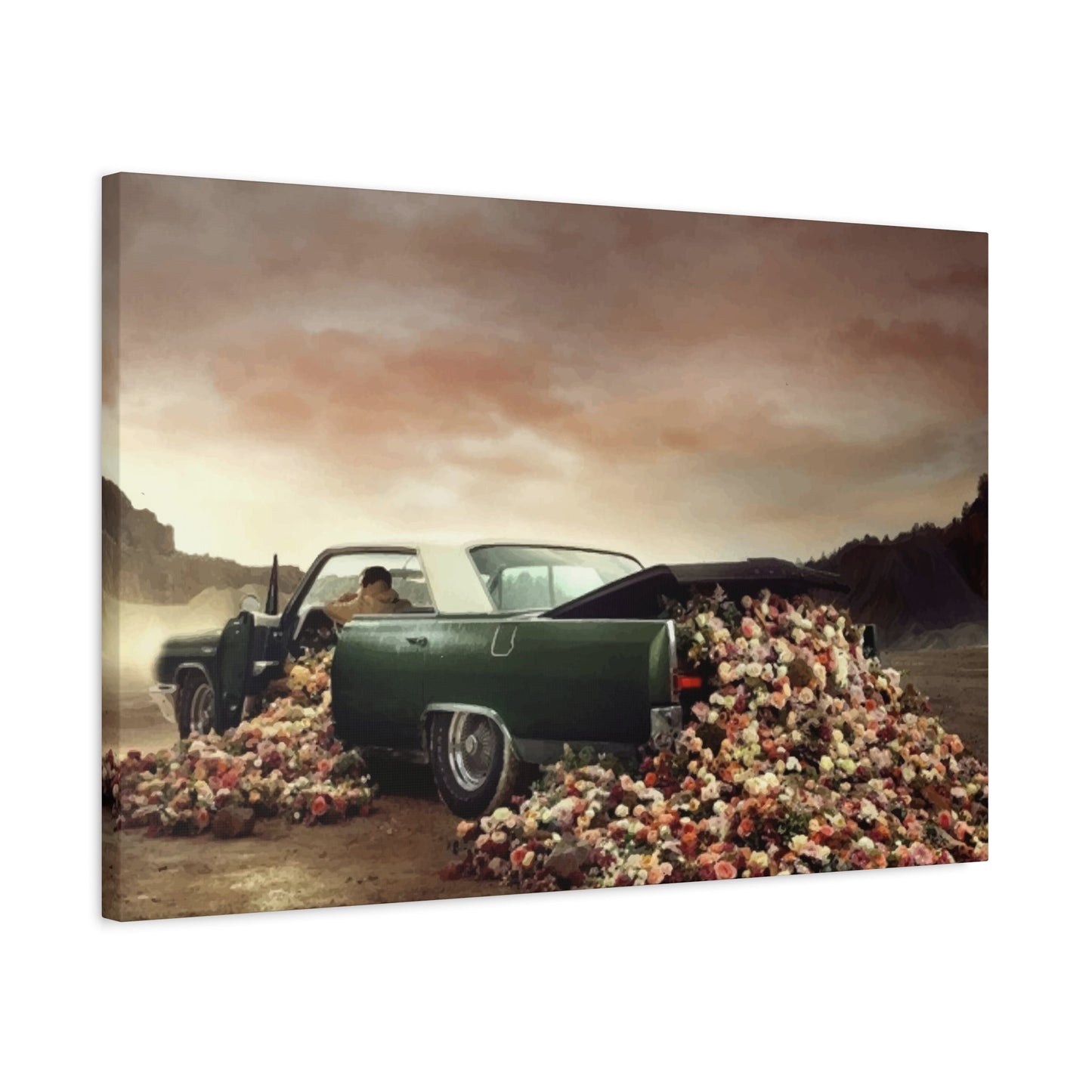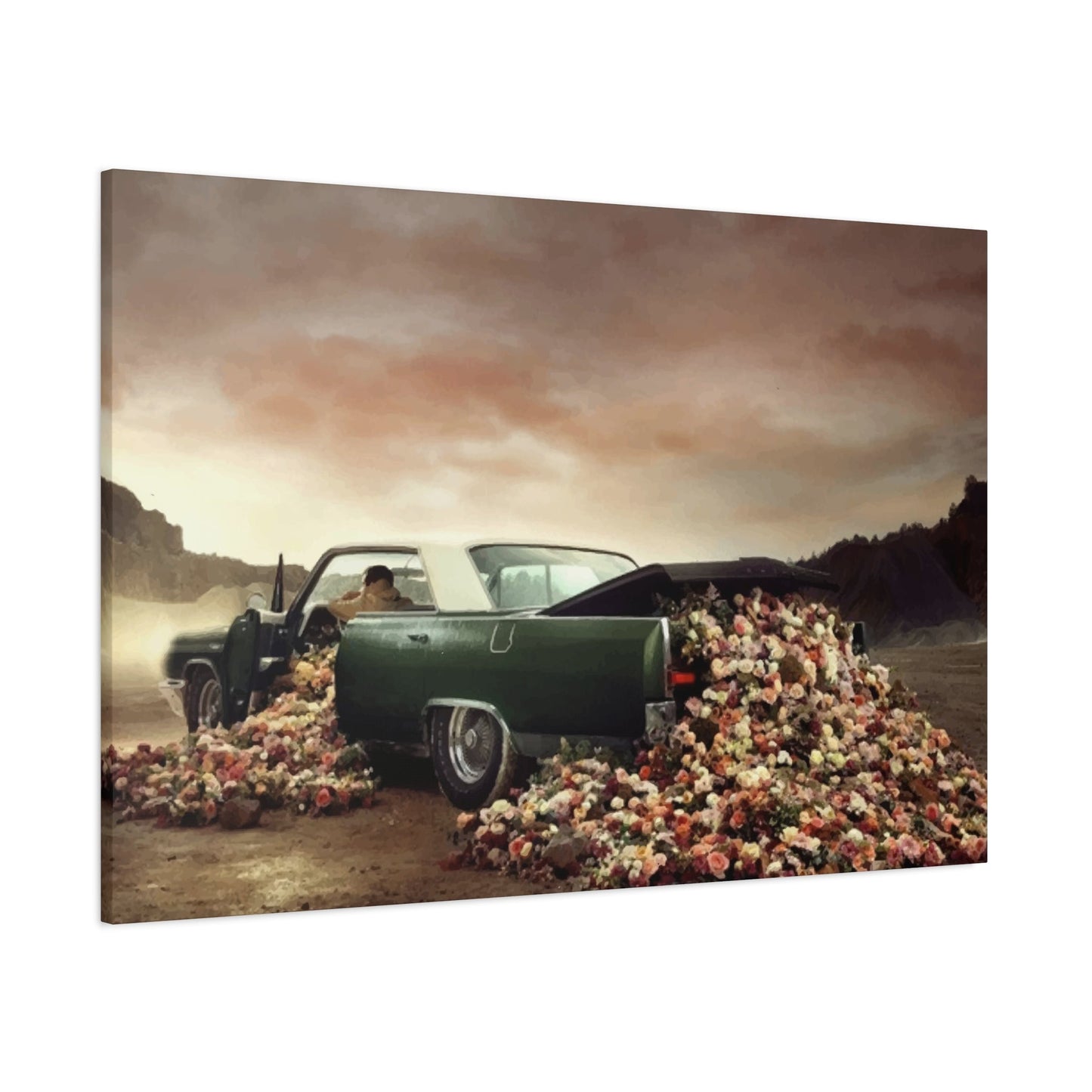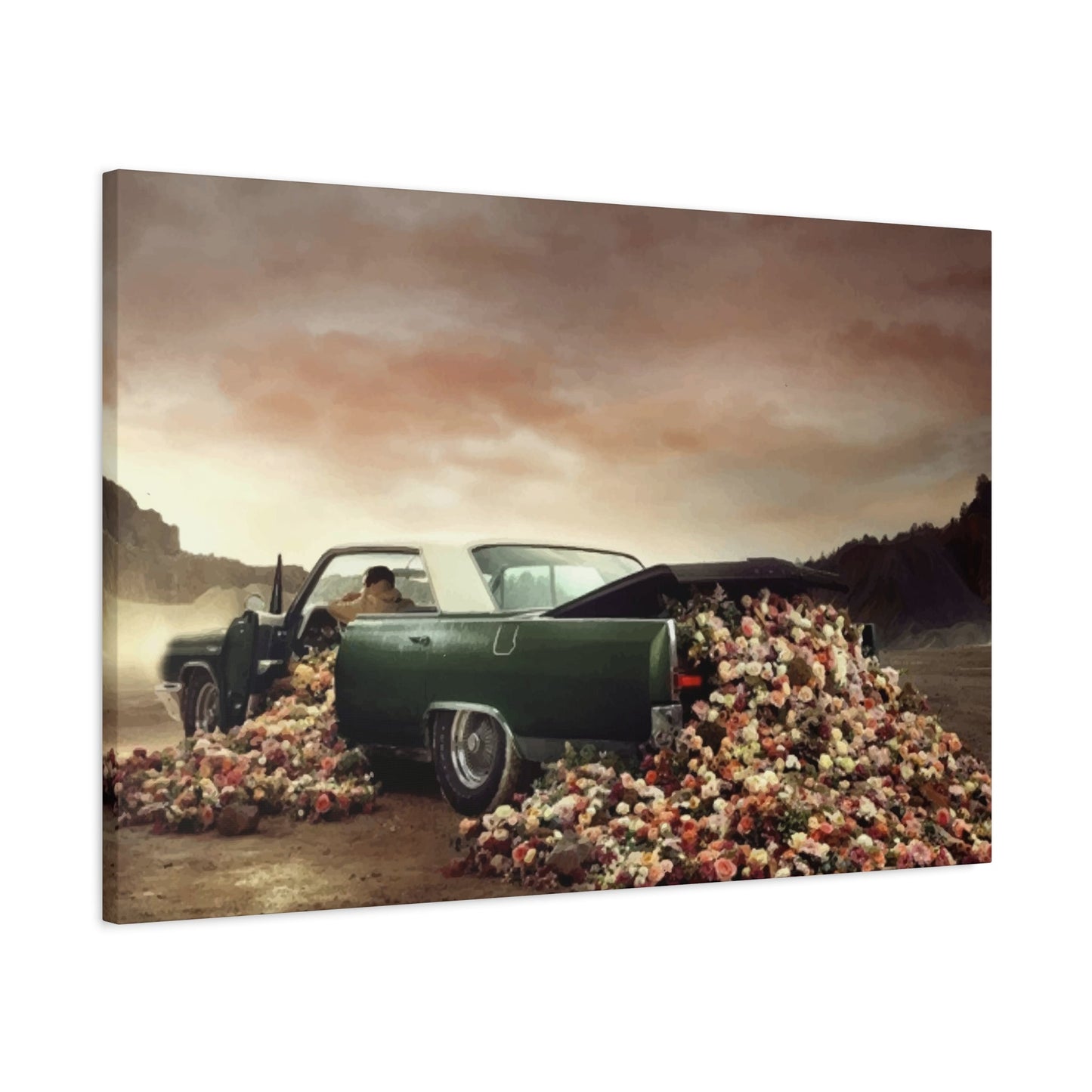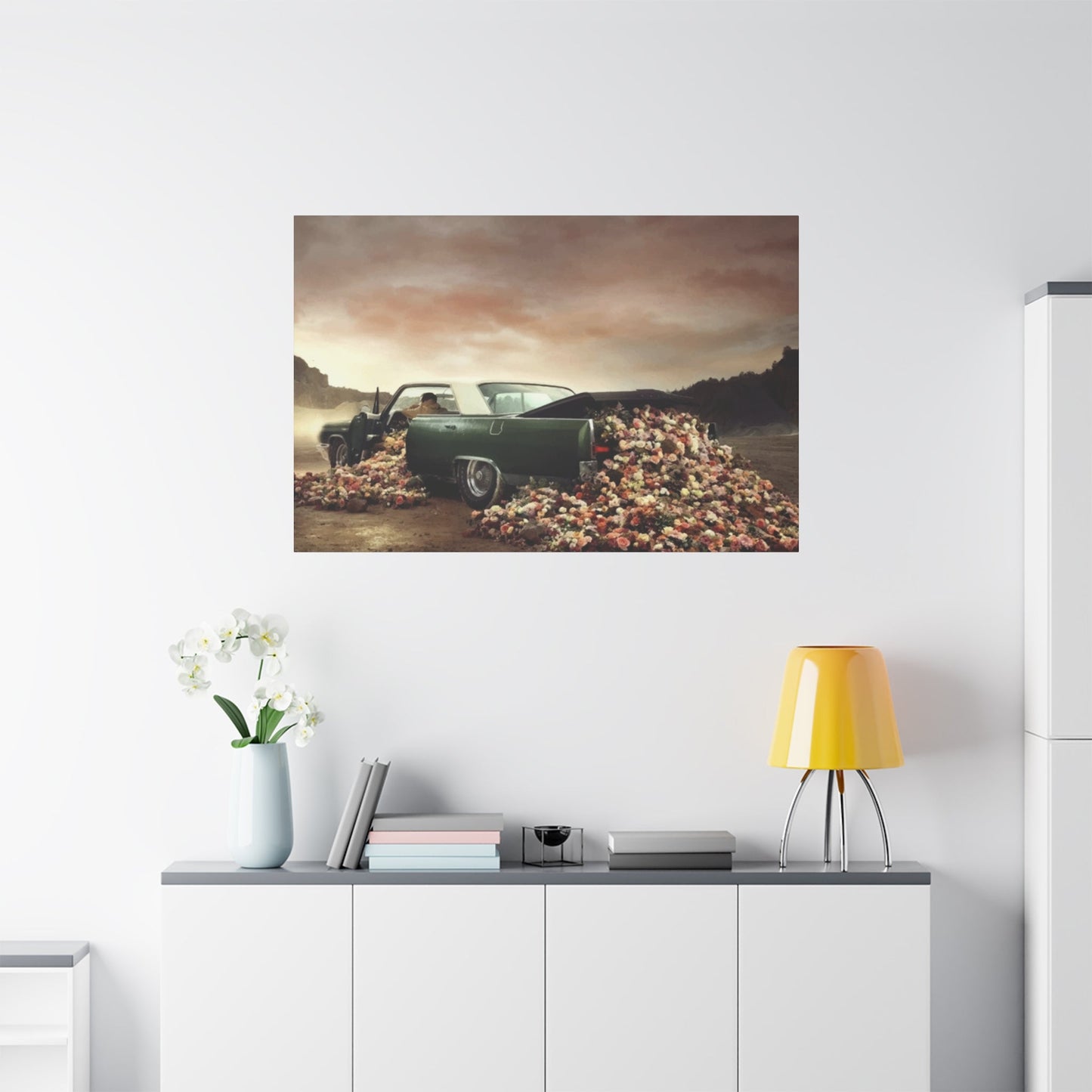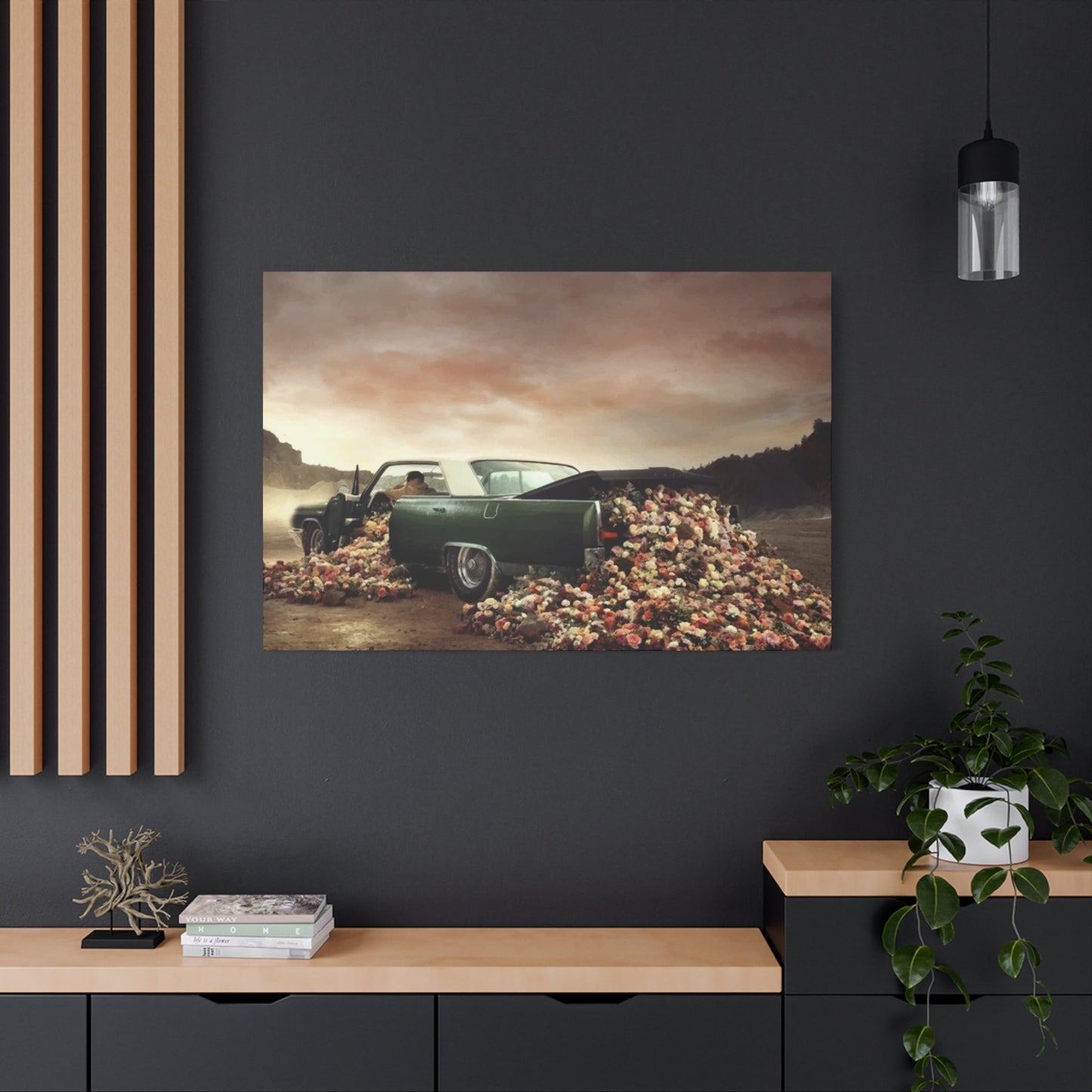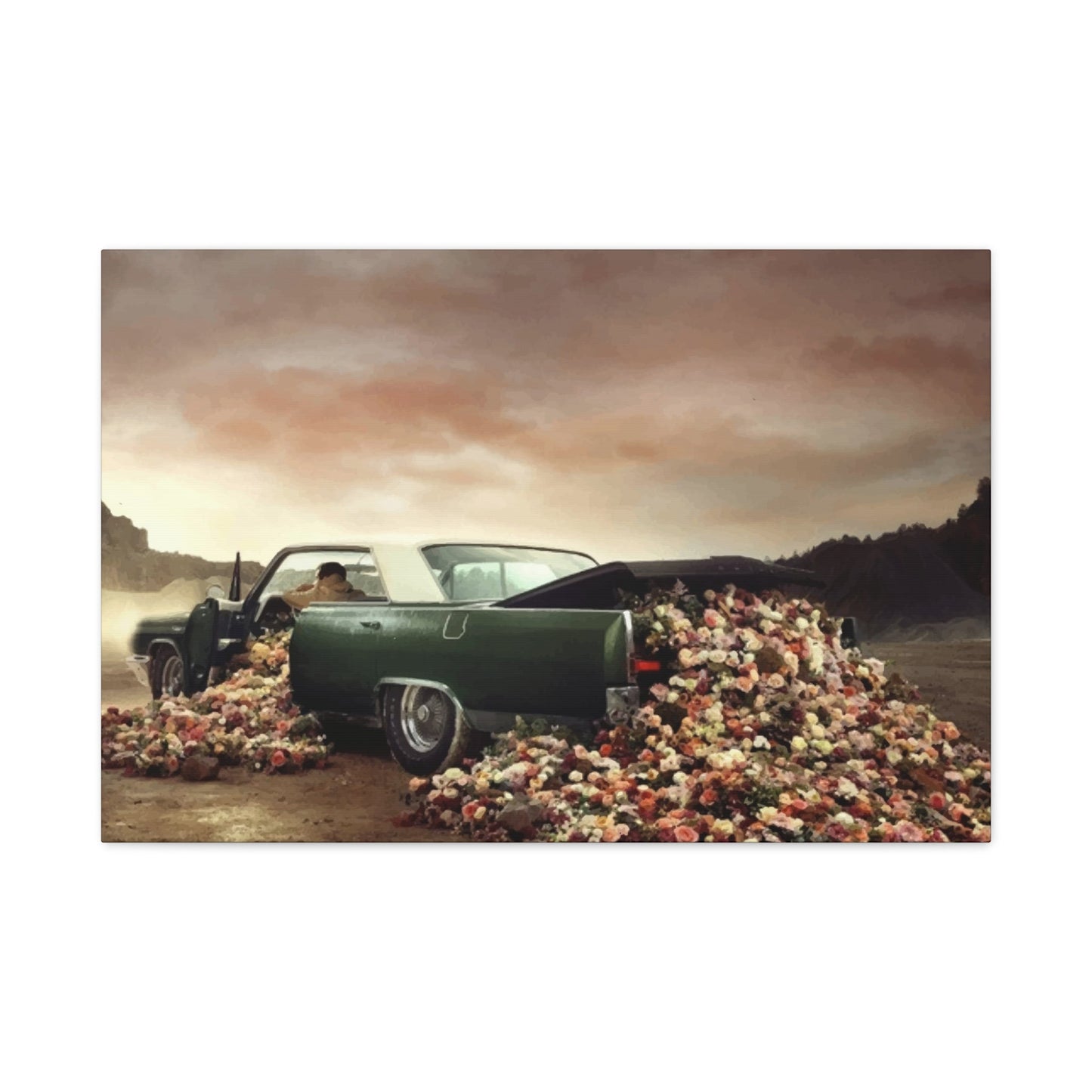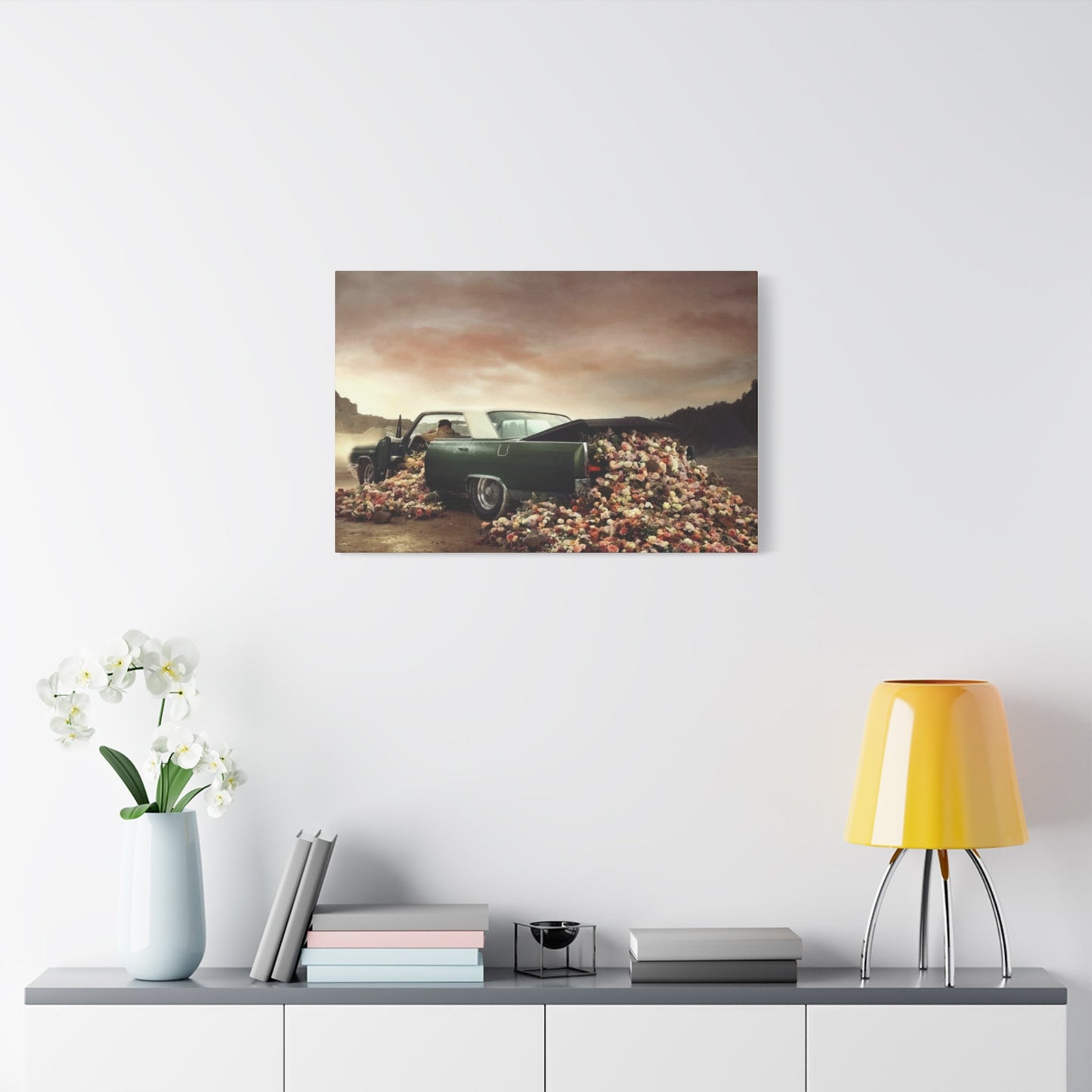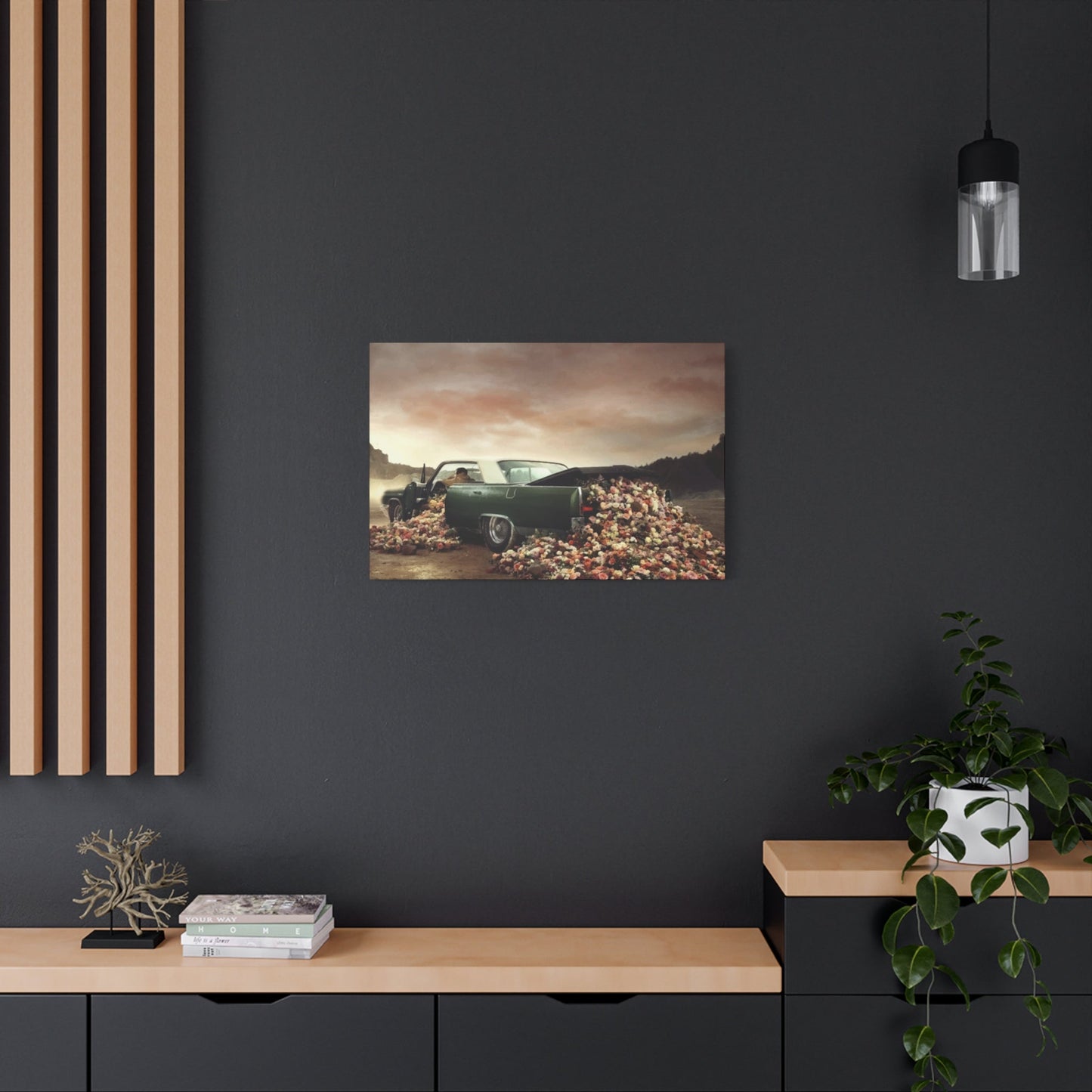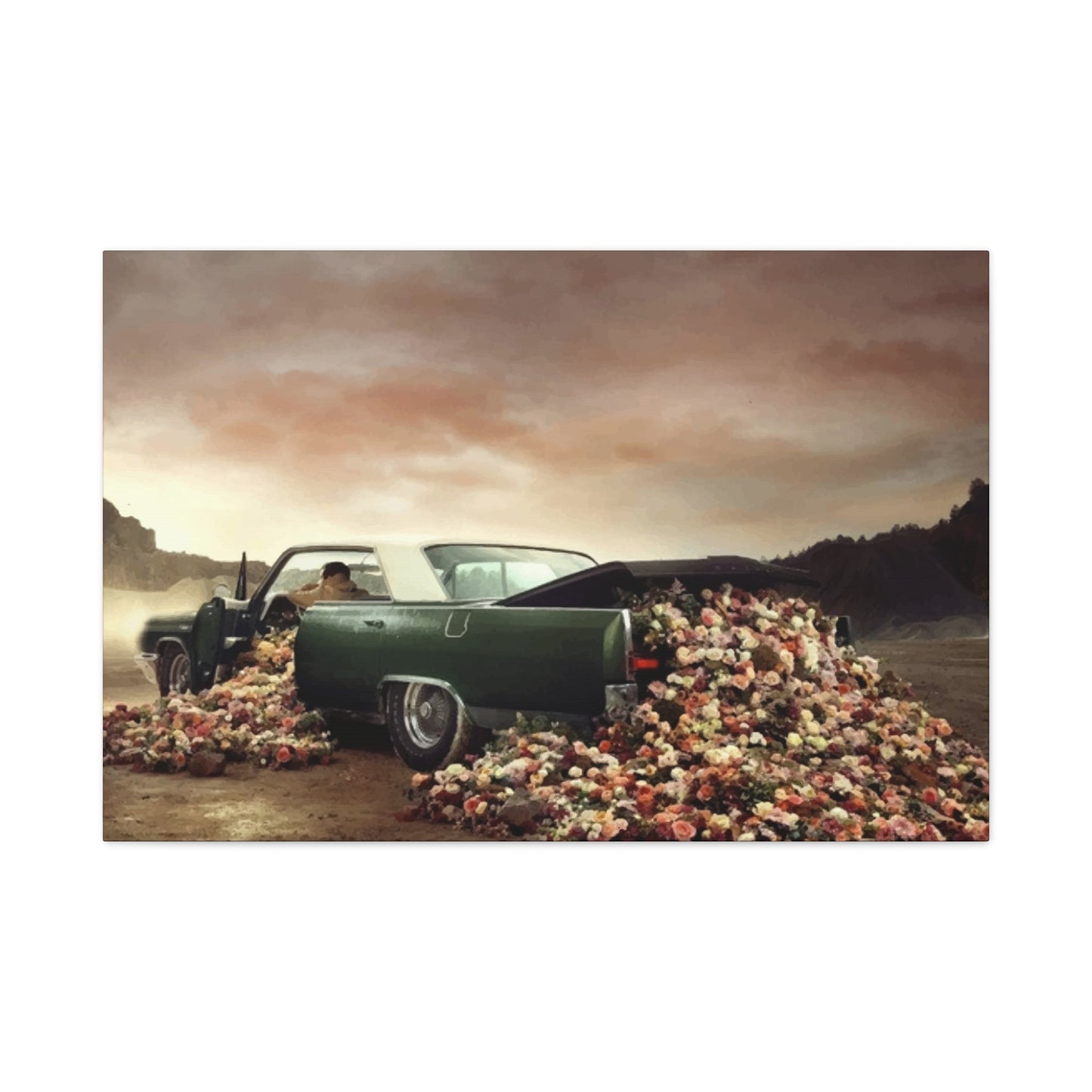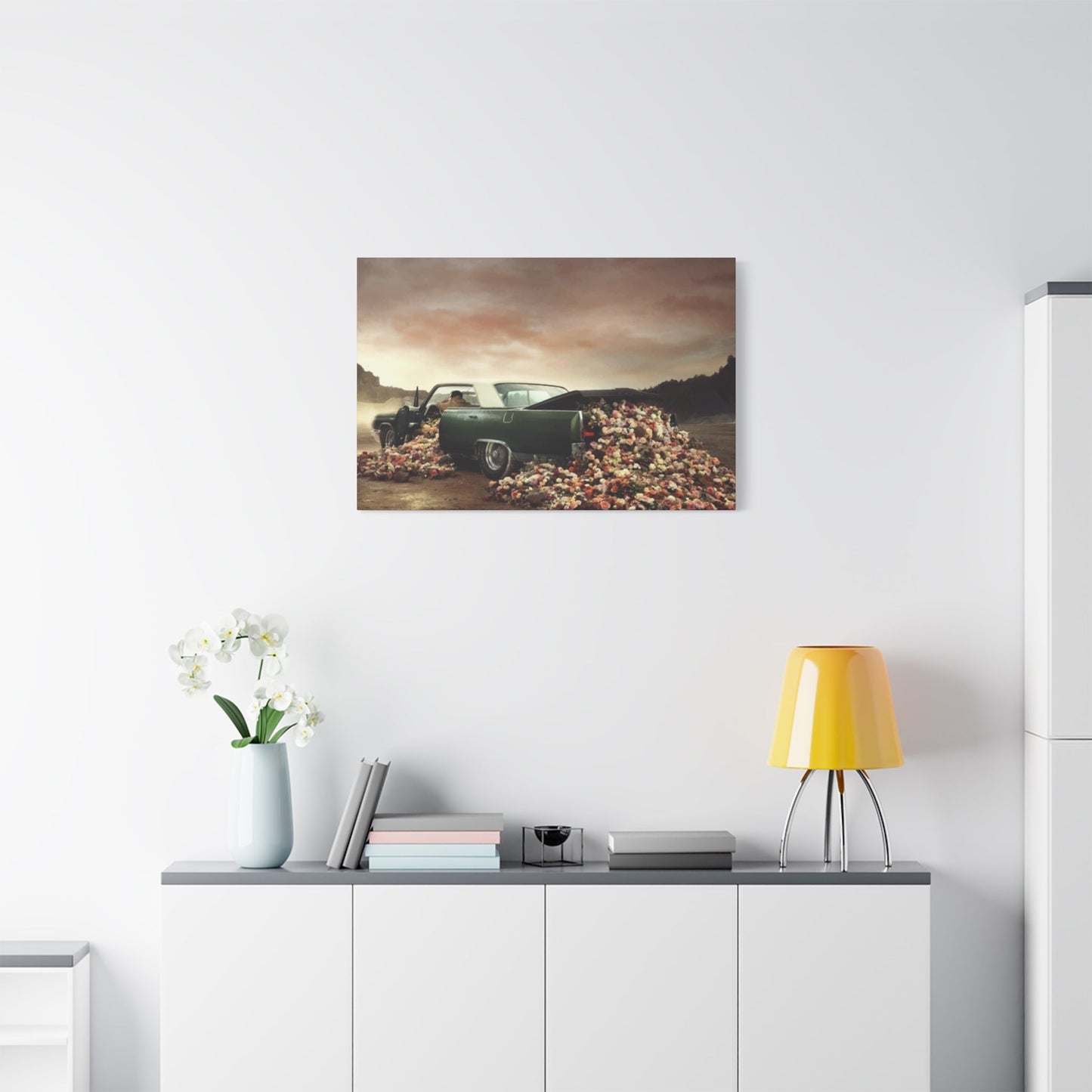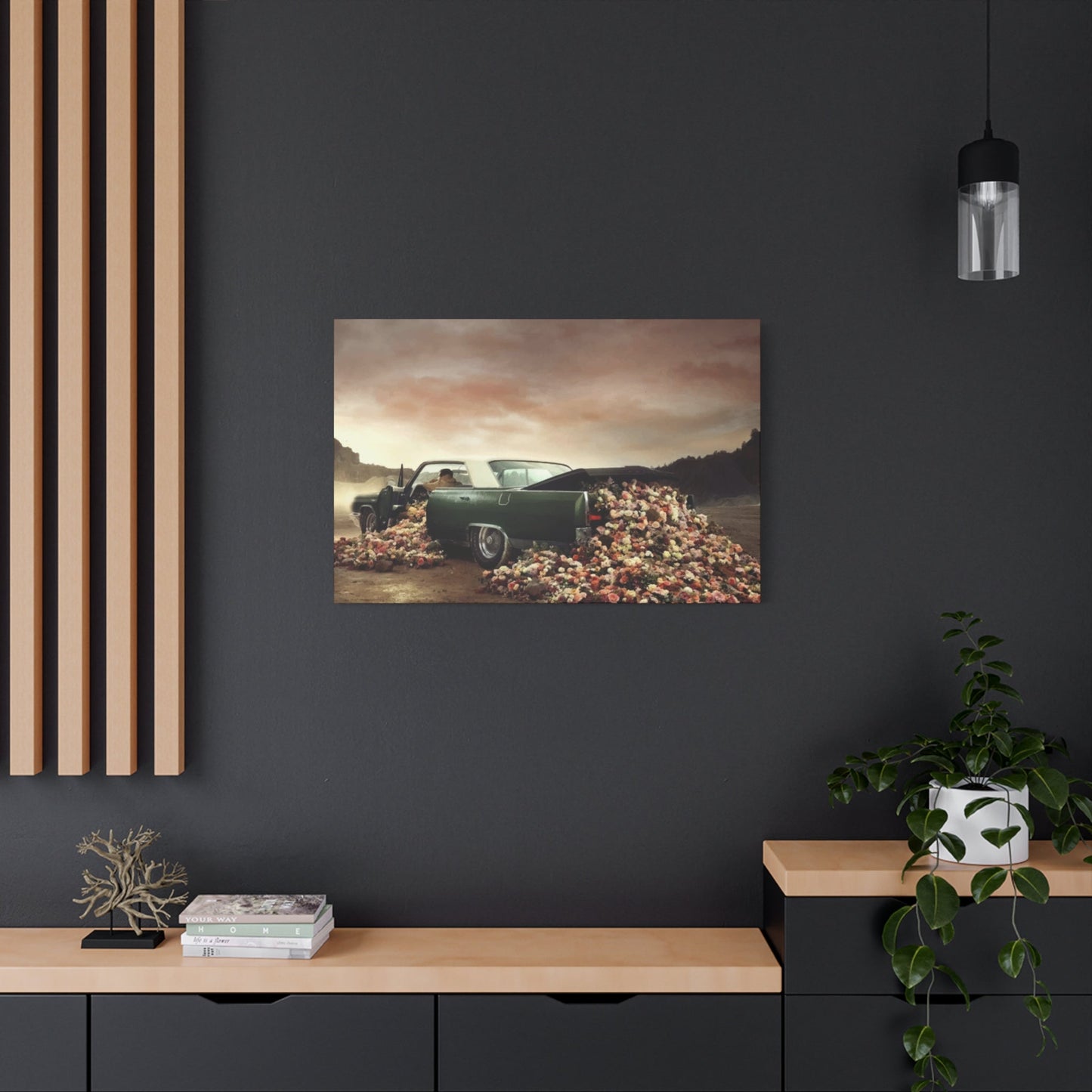Flower Car Wall Art: Blooming Automotive Artistry for Creative Decoration
The intersection of automotive passion and botanical beauty creates a captivating artistic expression that has gained tremendous popularity among art enthusiasts and collectors alike. Flower car wall art represents a unique fusion where mechanical precision meets organic elegance, creating visual narratives that speak to both the heart and the imagination. This extraordinary art form combines the raw power and sleek lines of automobiles with the delicate grace and vibrant colors of flowers, resulting in pieces that are both striking and surprisingly harmonious.
The appeal of this artistic genre lies in its ability to bridge seemingly opposing worlds. Where automotive culture traditionally celebrates speed, power, and mechanical prowess, floral imagery brings softness, growth, and natural beauty. When these elements merge on canvas or print, they create compositions that challenge conventional aesthetic boundaries while offering viewers a fresh perspective on both subjects. The contrast between hard metal surfaces and soft petals, between engineered perfection and organic randomness, produces visual tension that keeps the eye engaged and the mind curious.
Artists working in this medium often draw inspiration from various sources, including vintage car advertisements, botanical illustrations, street art, and contemporary digital design. The resulting artworks can range from photorealistic renderings of flower-adorned vehicles to abstract interpretations that blend automotive silhouettes with botanical patterns. Some pieces feature classic cars emerging from gardens of wildflowers, while others present modern supercars adorned with intricate floral wreaths or surrounded by blooming meadows.
The color palettes used in flower car wall art are as diverse as the artists who create them. Some pieces embrace muted, vintage-inspired tones that evoke nostalgic memories of classic car shows and country drives through blooming countryside. Others burst with vibrant, saturated colors that celebrate the joy and energy of both automotive culture and natural beauty. The interplay between the cool metallics of car bodies and the warm, organic hues of flowers creates dynamic visual experiences that can complement a wide range of decorative schemes.
This art form has found particular resonance among collectors who appreciate both automotive design and natural beauty. Car enthusiasts discover new ways to express their passion through artwork that celebrates not just the mechanical aspects of their hobby but also its emotional and aesthetic dimensions. Garden lovers and nature enthusiasts, meanwhile, find fresh perspectives on botanical art that incorporate elements of modern design and cultural symbolism.
The technical execution of flower car wall art varies considerably depending on the artist's chosen medium and style. Digital artists often create these pieces using advanced software that allows for precise manipulation of photographic elements, blending images of real cars with botanical photography or digital illustrations of flowers. Traditional painters might work in oils or acrylics, building up layers of color and texture to achieve the desired balance between mechanical and organic elements. Some artists prefer mixed media approaches, incorporating collage elements, pressed flowers, or even automotive paint samples into their compositions.
The symbolic content of flower car wall art often extends beyond mere aesthetic appeal. Many pieces explore themes of transformation, growth, and the relationship between human technology and the natural world. A rusted vintage car overtaken by climbing roses might represent the inevitable return of all things to nature, while a sleek sports car adorned with fresh blooms could symbolize the integration of human achievement with natural beauty. Some artists use this medium to comment on environmental concerns, presenting vehicles that appear to be giving life to rather than threatening the natural world.
The market for flower car wall art has expanded significantly in recent years, driven by growing interest in unique decorative pieces that reflect personal interests and values. Online galleries, independent artists, and even major retailers now offer extensive collections of prints, canvases, and original artworks in this genre. The accessibility of high-quality printing technology has made it possible for artists to produce affordable reproductions of their work while maintaining the visual impact of the original pieces.
Collectors of flower car wall art often develop sophisticated tastes that encompass both technical appreciation and emotional connection to the subject matter. Some focus on works that feature specific types of vehicles, such as classic American muscle cars adorned with roses, European sports cars surrounded by lavender fields, or vintage trucks emerging from sunflower meadows. Others collect based on artistic style, preferring either highly realistic representations or more abstract interpretations of the theme.
The cultural significance of flower car wall art reflects broader trends in contemporary art and design. As society becomes increasingly aware of environmental issues and seeks to find balance between technological advancement and natural preservation, artworks that explore these themes gain particular relevance. The flower car genre offers artists a platform to address these concerns while creating visually appealing works that can enhance residential and commercial environments.
Professional artists working in this field often develop signature styles that become recognizable to collectors and enthusiasts. Some specialize in vintage aesthetics, creating pieces that look as though they could have been advertising posters from the golden age of automotive design. Others embrace contemporary digital techniques to produce hypermodern interpretations that push the boundaries of what flower car art can become. The diversity of approaches ensures that there are examples of this art form to suit virtually any taste or decorative preference.
The installation and display of flower car wall art requires careful consideration of factors such as lighting, surrounding decor, and viewing angles. These pieces often work best when given adequate visual breathing room, allowing viewers to appreciate both the overall composition and the intricate details that make each work unique. Proper lighting can enhance the colors and textures present in the artwork, while thoughtful placement can create focal points that draw attention and spark conversation.
Illuminating Environments with Automotive Floral Artistry
Creating an inviting atmosphere through carefully selected artwork involves understanding how different pieces interact with existing decorative elements and architectural features. Flower car wall art offers unique opportunities to enhance various room settings while introducing elements of personality and visual interest that reflect the owner's passions and aesthetic preferences. The vibrant colors and dynamic compositions typical of this art form can serve as powerful focal points that energize otherwise neutral environments.
The psychological impact of combining automotive imagery with floral elements creates a sense of balanced energy that appeals to diverse personality types. The mechanical precision and power suggested by automotive subjects can provide feelings of strength and determination, while floral elements introduce concepts of growth, beauty, and natural harmony. This dual nature makes flower car wall art particularly effective in environments where people need to feel both energized and relaxed, such as home offices, creative studios, or recreational areas.
Color theory plays a crucial role in how flower car wall art affects room ambiance. Warm-toned pieces featuring sunset colors, golden vehicles, and flowers in reds, oranges, and yellows can make rooms feel more intimate and welcoming. Cool-toned artworks with blues, purples, and silver vehicles surrounded by lavender or morning glory can create calming, sophisticated atmospheres. Understanding these color relationships helps in selecting pieces that will achieve desired emotional responses in specific room settings.
The scale of flower car wall art significantly influences its impact within a room. Large-scale pieces can dominate wall areas and serve as primary design elements around which other decorative choices revolve. Medium-sized works often function well as part of gallery wall arrangements, where they can be combined with complementary pieces to create cohesive visual narratives. Smaller flower car art pieces work effectively as accent elements that add touches of personality without overwhelming existing decorative schemes.
Room functionality should influence the selection of flower car wall art styles and subjects. High-energy environments like gyms, workshops, or game rooms might benefit from pieces featuring powerful sports cars adorned with bold, vibrant flowers. More contemplative rooms such as reading nooks, meditation areas, or bedrooms might be better suited to gentler compositions featuring vintage vehicles surrounded by soft, pastel blooms or classic cars nestled in peaceful garden settings.
The architectural style of a room can either complement or create interesting contrast with flower car wall art. Modern, minimalist environments might be enhanced by clean, contemporary interpretations of the theme that emphasize geometric relationships between automotive and botanical elements. Traditional or rustic rooms might benefit from more ornate pieces that incorporate vintage aesthetics or hand-painted qualities that echo classic decorative arts traditions.
Lighting considerations become particularly important when displaying flower car wall art, as these pieces often contain both reflective metallic elements and light-absorbing organic textures. Natural lighting can bring out the full spectrum of colors present in floral elements while creating interesting reflections and shadows on automotive surfaces. Artificial lighting should be chosen to minimize glare on glossy surfaces while providing adequate illumination to appreciate fine details and color nuances.
The emotional resonance of flower car wall art often stems from personal connections to either automotive culture or botanical subjects. Car enthusiasts may be drawn to pieces that feature vehicles similar to ones they own or admire, while gardening enthusiasts might prefer artworks that showcase familiar or favorite flower varieties. These personal connections enhance the meaningfulness of the art and contribute to the sense of home and personal expression that well-chosen decorative pieces provide.
Seasonal considerations can influence how flower car wall art is perceived and appreciated throughout the year. Pieces featuring spring flowers like cherry blossoms or tulips might feel particularly appropriate during renewal seasons, while artworks showcasing autumn foliage or winter scenes can provide warmth and beauty during colder months. Some collectors enjoy rotating their flower car art displays to reflect seasonal changes and maintain visual freshness in their living environments.
The social aspects of displaying flower car wall art should not be overlooked, as these pieces often serve as conversation starters that reveal shared interests and personal passions. Guests who appreciate automotive culture, gardening, or unique artistic expressions often find common ground through discussions sparked by thoughtfully chosen artworks. This social dimension adds value beyond the purely aesthetic, contributing to the creation of welcoming, engaging home environments that reflect the owner's personality and interests.
The Artistic Marriage of Botanical Elements and Automotive Design
The creative process behind combining floral imagery with automotive subjects requires artists to navigate complex relationships between contrasting visual languages. Botanical elements bring organic curves, irregular textures, and natural color variations that follow patterns established by millions of years of evolution. Automotive design, conversely, emphasizes geometric precision, engineered surfaces, and colors chosen for psychological impact and brand recognition. Successful flower car wall art achieves harmony between these opposing forces through careful composition, color coordination, and thematic coherence.
Artists approaching this fusion often begin by establishing the primary relationship between vehicle and botanical elements. Some choose to present cars as carriers or containers for floral displays, creating images of convertibles filled with flower arrangements or pickup trucks carrying garden loads. Others prefer integration approaches where flowers appear to grow from or through automotive surfaces, suggesting symbiotic relationships between nature and technology. Still others opt for environmental settings where vehicles exist harmoniously within flowering landscapes, neither dominating nor being dominated by their natural surroundings.
The historical precedents for combining mechanical and natural elements in art provide rich inspiration for contemporary flower car artists. Art Nouveau movement artists frequently incorporated both industrial and botanical motifs in their decorative designs, creating flowing compositions that celebrated both human achievement and natural beauty. The Arts and Crafts movement emphasized the importance of bringing natural elements into manufactured environments, a philosophy that resonates strongly with modern flower car art concepts.
Technical challenges arise when artists attempt to render both automotive and botanical subjects convincingly within single compositions. Car surfaces require understanding of how light reflects off various metallic and painted finishes, while flowers demand knowledge of organic structure, translucency, and the way light filters through petals and leaves. Digital artists often work with extensive photographic reference libraries that include both high-quality automotive photography and detailed botanical documentation to achieve realistic results.
The symbolic potential of flower car art extends far beyond surface aesthetics, offering opportunities for social commentary and philosophical exploration. Environmental themes naturally emerge from juxtapositions between vehicles, traditionally associated with pollution and resource consumption, and flowers, representing natural purity and renewal. Some artists use this tension to create hopeful visions of sustainable futures where technology and nature coexist beneficially, while others present more cautionary tales about the environmental costs of automotive culture.
Cultural interpretations of flower car art vary significantly depending on regional automotive traditions and botanical preferences. American artists might focus on muscle cars adorned with roses or wildflowers, reflecting national preferences for powerful vehicles and native flora. European artists often feature elegant sports cars or luxury sedans surrounded by formal garden flowers, echoing centuries of horticultural sophistication. Japanese artists might combine compact vehicles with cherry blossoms or other culturally significant flowers, creating works that speak to specific aesthetic traditions and values.
The commercial applications of flower car art extend beyond fine art markets into areas such as automotive advertising, botanical product marketing, and lifestyle brand development. Car manufacturers have occasionally commissioned flower car artwork for special edition promotions or environmentally focused campaigns. Garden centers and floral businesses have used automotive imagery to appeal to broader demographic ranges and create memorable brand associations. These commercial applications demonstrate the broad appeal and marketing potential of the flower car aesthetic.
The psychological appeal of flower car art often relates to universal human desires for both adventure and beauty, excitement and tranquility. Automotive imagery can evoke feelings of freedom, power, and exploration, while floral elements suggest peace, growth, and natural connection. The combination of these psychological triggers creates artworks that satisfy multiple emotional needs simultaneously, making them particularly effective as decorative elements in environments where people seek both stimulation and relaxation.
The technical evolution of flower car art has been significantly influenced by developments in digital art software and high-resolution printing technology. Early examples of this genre were primarily created using traditional painting techniques or photographic collage methods. Modern artists have access to sophisticated digital tools that allow for seamless blending of photographic elements, precise color matching, and effects that would be difficult or impossible to achieve through conventional means. These technological advances have opened new creative possibilities while making the genre more accessible to artists without extensive traditional training.
The collectibility of flower car art has been enhanced by the growing recognition of digital art as a legitimate collectible medium. Limited edition prints, artist proofs, and even original digital files have found markets among collectors who appreciate both the aesthetic qualities and the technical innovations represented in contemporary examples of the genre. The ability to produce high-quality reproductions has also made flower car art more accessible to broader audiences who might not be able to afford original paintings but can appreciate the artistic vision through well-executed prints.
Decorative Integration Strategies for Automotive Botanical Artwork
Successfully incorporating flower car wall art into existing room designs requires careful consideration of color relationships, scale proportions, and thematic coherence with surrounding decorative elements. The bold nature of many flower car artworks means they can easily become dominant features that either enhance or overwhelm room aesthetics, depending on how thoughtfully they are integrated into overall design schemes. Understanding the principles of visual balance and harmony becomes essential for achieving satisfactory decorative results.
Color coordination represents perhaps the most critical aspect of successful flower car art integration. The wide color ranges present in both automotive and floral imagery provide numerous opportunities for creating connections with existing room colors while also introducing fresh accent tones. Rooms decorated in neutral color schemes often benefit from flower car art that introduces controlled amounts of vibrant color through floral elements, while the automotive components provide sophisticated metallics that complement modern furnishing finishes.
The positioning of flower car wall art within rooms significantly affects its visual impact and relationship to other decorative elements. Central placement on primary walls creates focal points that draw immediate attention and establish mood for entire rooms. Corner positioning can soften harsh architectural angles while adding visual interest to areas that might otherwise feel neglected. Gallery wall arrangements allow flower car art to participate in larger compositional narratives while maintaining its individual character and appeal.
Complementary decorative accessories can enhance the impact of flower car wall art while creating cohesive design themes throughout rooms. Automotive-inspired elements such as vintage license plates, steering wheel decorations, or gear-shaped mirrors can reinforce the mechanical aspects of the artwork. Botanical accessories including fresh flowers, potted plants, or nature-inspired textiles can strengthen connections to the floral elements. The key lies in achieving balance rather than overwhelming viewers with too many competing themes.
Furniture selection and arrangement can either support or conflict with flower car wall art displays. Modern, streamlined furniture often provides clean backdrops that allow artwork to command attention without visual competition. Traditional or ornate furniture styles might create busy visual environments where flower car art struggles to maintain prominence. Understanding these relationships helps in making furniture choices that enhance rather than detract from artistic investments.
Lighting design plays a crucial role in showcasing flower car wall art effectively while creating appropriate ambient conditions for room use. Track lighting or picture lights can provide focused illumination that brings out color details and surface textures without creating unwanted glare. Ambient lighting should be sufficient to appreciate artwork during normal room use but not so bright as to wash out colors or create viewing difficulties. The interplay between natural and artificial light sources throughout daily cycles can dramatically affect how flower car art appears at different times.
The psychological effects of flower car art placement should be considered when determining optimal display locations. High-energy pieces featuring powerful vehicles and vibrant flowers might be most appropriate in rooms used for active pursuits or social gatherings. More contemplative compositions could be better suited to private retreats or quiet study areas. Understanding the emotional impact of different artistic styles and subjects helps in creating room atmospheres that support intended activities and moods.
Maintenance considerations become important factors in long-term satisfaction with flower car wall art displays. Pieces displayed in high-humidity areas such as bathrooms or kitchens may require special framing or protective treatments to prevent damage from moisture exposure. High-traffic areas might need artworks positioned to avoid accidental contact or damage from daily activities. Planning for these practical concerns during initial installation prevents future problems and preserves artistic investments.
The evolution of room designs over time should be anticipated when making flower car art selections and placement decisions. Pieces chosen for their ability to complement current decorative schemes should also have sufficient versatility to work with potential future changes in color schemes, furniture arrangements, or functional uses of rooms. This forward-thinking approach helps ensure that artistic investments remain valuable and appropriate over extended periods.
Cultural considerations may influence how flower car wall art is perceived by family members and guests from different backgrounds or generations. While younger viewers might immediately connect with contemporary digital art styles and automotive culture references, older family members might prefer pieces that incorporate vintage aesthetics or traditional artistic techniques. Selecting artworks that offer multiple levels of appreciation can help ensure broad appeal and lasting satisfaction.
The investment value of flower car wall art should be evaluated in terms of both immediate decorative impact and potential long-term appreciation. Original artworks by established artists in this genre may increase in value as the field gains recognition and collector interest grows. High-quality limited edition prints might also appreciate, particularly if the artists achieve broader recognition. However, the primary value should always be the personal satisfaction and aesthetic enhancement that the artwork provides in daily living environments.
Contemporary Movements in Automotive Floral Artistic Expression
The current landscape of flower car wall art reflects broader trends in contemporary art, including the increasing acceptance of digital media, the democratization of art creation through accessible technology, and the growing interest in hybrid genres that combine seemingly unrelated subjects. Social media platforms have played particularly important roles in promoting this art form, allowing artists to share their work with global audiences and build communities of enthusiasts who appreciate the unique aesthetic qualities of automotive floral combinations.
The influence of street art and graffiti culture has contributed significantly to the development of flower car wall art styles. Many artists working in this genre have backgrounds in urban art forms and bring sensibilities about color, composition, and cultural commentary that originated in public art contexts. The resulting artworks often feature bold color schemes, dynamic compositions, and social themes that reflect urban experiences and contemporary cultural concerns. This street art influence has helped flower car art appeal to younger demographics and maintain relevance in rapidly changing cultural environments.
Digital art platforms and print-on-demand services have revolutionized the accessibility and distribution of flower car wall art. Artists can now create and sell their work directly to consumers without the traditional barriers of gallery representation or large-scale printing investments. This democratization has led to an explosion of stylistic diversity and has allowed niche interests within the flower car genre to find dedicated audiences. The result is a marketplace rich with options ranging from photorealistic renderings to highly stylized cartoon interpretations.
The environmental movement has provided thematic inspiration for many contemporary flower car artists who use their work to explore relationships between human technology and natural ecosystems. Some create optimistic visions of sustainable transportation adorned with thriving plant life, while others present more critical perspectives on automotive culture through imagery of vehicles being reclaimed by nature. These environmental themes add depth and social relevance to what might otherwise be purely decorative artworks.
The growing popularity of vintage and retro aesthetics in contemporary design has influenced flower car art trends toward nostalgic interpretations that celebrate classic automotive design periods. Many artists focus on vehicles from the 1950s through 1970s, when car design emphasized distinctive styling and cultural significance. These pieces often incorporate period-appropriate flowers and color schemes that evoke specific decades, appealing to collectors interested in both automotive history and nostalgic aesthetics.
The international art market has embraced flower car wall art as galleries and collectors recognize its appeal across cultural boundaries. Automotive enthusiasm exists worldwide, and flowers are universally appreciated symbols of beauty and life. This broad appeal has led to international exhibitions, cross-cultural artistic collaborations, and the development of regional styles that reflect local automotive preferences and botanical traditions while maintaining the essential character of the genre.
The integration of flower car art with other decorative arts has created opportunities for coordinated design approaches that extend beyond wall hangings to include textiles, pottery, furniture decoration, and architectural elements. Interior designers increasingly recognize the potential for flower car themes to unify diverse decorative elements while adding personality and visual interest to residential and commercial environments. This expanded application has contributed to growing mainstream acceptance and market demand.
The technical sophistication of contemporary flower car art continues to evolve as artists master increasingly advanced digital tools and printing technologies. High-dynamic-range imaging, advanced color management systems, and specialized printing techniques allow for reproductions that rival the visual impact of original paintings while maintaining affordability for broader markets. These technical advances have raised quality standards throughout the genre and enabled artists to achieve previously impossible visual effects.
The collector market for flower car wall art has developed sophisticated appreciation criteria that consider both artistic merit and cultural significance. Experienced collectors often focus on specific sub-genres, historical periods, or individual artists whose work demonstrates particular technical skill or conceptual depth. This developing connoisseurship has elevated the status of the best examples of flower car art and encouraged artists to push creative boundaries in pursuit of recognition and collector interest.
The educational applications of flower car art have been explored by museums, schools, and cultural institutions seeking engaging ways to discuss topics such as industrial design, environmental science, and cultural symbolism. The accessible nature of the subject matter and the visual appeal of quality examples make flower car art effective tools for sparking discussions about broader social and environmental issues while maintaining audience interest through aesthetic appreciation.
The therapeutic applications of creating and viewing flower car art have been recognized by art therapists and mental health professionals. The combination of mechanical precision and organic beauty can provide psychological benefits for individuals dealing with stress, anxiety, or depression. Creating flower car art allows for expression of both control and acceptance, while viewing such artworks can provide inspiration and emotional balance for people navigating challenging life circumstances.
Creative Project Approaches for Automotive Botanical Artwork
The hands-on creation of flower car wall art offers unique opportunities for artistic expression while developing skills in composition, color theory, and mixed media techniques. Artists interested in exploring this genre can approach projects from various technical angles depending on their skill levels, available materials, and creative goals. The accessibility of digital tools has made it possible for beginners to create impressive results while providing advanced artists with sophisticated options for pushing creative boundaries.
Traditional painting approaches to flower car art typically begin with careful planning of composition and color schemes. Sketching initial concepts allows artists to experiment with different arrangements of automotive and botanical elements before committing to final compositions. Acrylic paints offer versatility and quick drying times that facilitate layering techniques necessary for achieving both mechanical precision and organic textures. Oil paints provide longer working times and superior color blending capabilities but require more advanced technical knowledge and proper ventilation considerations.
Watercolor techniques can produce particularly striking flower car artworks when artists learn to control the medium's fluid properties to suggest both hard automotive surfaces and soft floral textures. The transparency of watercolors allows for interesting layering effects where automotive silhouettes can show through floral overpaintings, creating integrated compositions that emphasize the relationship between mechanical and natural elements. Masking techniques become particularly important for preserving crisp edges on automotive elements while allowing flowers to flow organically around them.
Digital art creation opens unlimited possibilities for flower car artwork through the ability to combine photographic elements, digital painting, and special effects. Software packages designed for photo manipulation allow artists to seamlessly blend images of real cars with botanical photography or digital flower illustrations. Layer-based editing systems enable non-destructive experimentation with color schemes, compositions, and effects until satisfactory results are achieved. The ability to work at high resolutions ensures that final prints maintain quality at large sizes.
Mixed media approaches combine traditional and digital techniques to create unique textures and visual effects. Artists might begin with digital compositions that are then printed and enhanced with traditional painting techniques, pressed flowers, or collage elements. Alternatively, traditional paintings can be digitally photographed and enhanced with effects or additional elements that would be difficult to achieve through conventional means alone. These hybrid approaches often produce the most distinctive and memorable results.
The selection and preparation of source materials significantly affects the quality of finished flower car artworks. High-resolution automotive photography provides the foundation for realistic vehicle rendering, while botanical photography or illustration supplies floral elements. Professional-quality materials produce better results, but careful selection and preparation of amateur photography can also yield satisfactory outcomes for personal projects or learning exercises. Understanding how to evaluate and improve source materials is essential for achieving professional-quality results.
Color theory application becomes particularly important in flower car art creation due to the need to harmonize disparate color palettes from automotive and botanical sources. Understanding complementary color relationships helps in creating dynamic contrasts that enhance visual interest without creating jarring combinations. Analogous color schemes can produce more subtle, sophisticated results that emphasize harmony over contrast. Experimenting with different color approaches during the planning phase prevents problems that might be difficult to correct later in the creative process.
Composition techniques from traditional art education apply directly to flower car artwork creation. The rule of thirds can guide placement of primary automotive subjects, while floral elements can provide balance and visual flow throughout compositions. Leading lines created by automotive design elements can direct viewer attention toward important focal points or create movement through artworks. Understanding these fundamental composition principles helps ensure that finished pieces are visually engaging and professionally executed.
The development of personal style in flower car art requires experimentation with different technical approaches and subject matter preferences. Some artists gravitate toward photorealistic rendering that showcases technical virtuosity, while others prefer more interpretive approaches that emphasize artistic expression over literal accuracy. Exploring various styles during the learning process helps artists discover their natural inclinations and develop signature approaches that distinguish their work from others in the field.
Project documentation and portfolio development become important for artists serious about developing flower car art skills and potentially marketing their work. Photographing work in progress provides valuable learning tools for analyzing successful techniques and identifying areas for improvement. Maintaining organized portfolios of finished work helps track artistic development over time and provides materials for potential exhibition or sales opportunities. Digital documentation also serves as backup protection for valuable original artworks.
The business aspects of flower car art creation include understanding copyright issues related to automotive imagery, developing pricing strategies for original works and prints, and learning about potential markets for different types of flower car artwork. Artists must navigate intellectual property concerns when using recognizable automotive designs while developing original interpretations that avoid legal complications. Understanding these practical considerations helps ensure that creative efforts can be successfully monetized if desired.
Canvas Medium Applications for Vehicular Botanical Compositions
The selection of canvas materials and preparation techniques significantly influences the final appearance and longevity of flower car wall art pieces created through traditional painting methods. Different canvas weaves, priming materials, and stretching techniques affect how paints interact with surfaces and how finished artworks respond to environmental conditions over time. Understanding these technical considerations helps artists make informed decisions that support their creative goals while ensuring that finished pieces maintain their intended appearance for years.
Cotton canvas remains the most popular choice for flower car artwork due to its balanced texture, paint absorption characteristics, and reasonable cost. The medium-weight weaves typically used for fine art applications provide enough texture to hold paint effectively while remaining smooth enough for detailed work required in automotive rendering. Pre-primed canvases offer convenience and consistent surface preparation, while unprimed canvases allow artists complete control over surface characteristics but require additional preparation time and technical knowledge.
Linen canvases represent premium options that offer superior durability and more refined surface characteristics compared to cotton alternatives. The tighter weave and superior fiber strength of linen provide excellent bases for detailed work while maintaining structural integrity over extended periods. However, linen canvases cost significantly more than cotton options and may not be justified for beginning artists or experimental work. The investment becomes more reasonable for serious artworks intended for exhibition or sale.
Synthetic canvas materials have gained popularity among artists working in flower car genres due to their consistent quality, resistance to environmental factors, and compatibility with both traditional and contemporary painting materials. Polyester canvases maintain dimensional stability better than natural fiber alternatives and resist moisture-related problems that can affect cotton or linen over time. The uniform surface characteristics of synthetic materials can be particularly advantageous for artists working in highly detailed styles that require consistent paint application.
Canvas preparation techniques affect how paints interact with surfaces and influence the final appearance of flower car artworks. Traditional gesso priming creates slightly textured surfaces that provide good paint adhesion while allowing for smooth color application. Acrylic-based primers dry quickly and provide excellent bases for both acrylic and oil paint systems. Some artists prefer to apply multiple primer coats with light sanding between applications to achieve perfectly smooth surfaces ideal for detailed automotive rendering.
The sizing of canvases must be carefully considered in relation to intended display locations and the complexity of planned compositions. Large canvases provide opportunities for impressive visual impact and detailed rendering but require significant studio space during creation and appropriate display locations after completion. Smaller canvases are more manageable during creation and more versatile for display but may not provide sufficient area for complex compositions that include both detailed automotive and botanical elements.
Stretching techniques affect how canvases respond to paint application and environmental changes over time. Proper stretching prevents sagging or warping that can damage painted surfaces or create viewing problems. Gallery-wrapped canvases, where painted surfaces extend around frame edges, provide contemporary presentation options that eliminate the need for separate framing. Traditional stretched canvases intended for framing should have adequate border areas to accommodate various framing options without interfering with compositional elements.
Color interaction with different canvas types affects the final appearance of flower car artworks and must be considered during planning stages. Bright white primed canvases provide maximum color intensity but can create harsh contrasts that interfere with subtle color relationships. Off-white or tinted primers can provide warmer foundations that enhance certain color schemes while reducing the intensity of others. Testing color schemes on sample canvas pieces helps predict how final artworks will appear and prevents disappointment with completed pieces.
The archival quality of canvas materials and preparation systems affects the long-term value and appearance of flower car artworks. Acid-free materials prevent deterioration that can cause yellowing, brittleness, or other age-related damage. Museum-quality preparation techniques ensure that artworks maintain their intended appearance for decades or centuries if properly cared for. While archival materials cost more initially, they represent wise investments for serious artworks intended for long-term appreciation or eventual sale.
Maintenance considerations for canvas-based flower car art include proper storage, handling, and display practices that preserve artistic investments. Canvases should be protected from direct sunlight, extreme temperatures, and high humidity that can cause paint or support deterioration. Proper framing with archival materials provides protection while enhancing presentation. Regular inspection for signs of damage allows for prompt conservation treatment if problems develop.
The environmental impact of canvas production and disposal has become increasingly important to environmentally conscious artists and collectors. Sustainable canvas options made from responsibly sourced materials or recycled content provide alternatives for artists concerned about their environmental footprint. Proper disposal or recycling of canvas materials at the end of their useful lives helps minimize environmental impact while supporting sustainable art practices.
Vintage Automotive Aesthetics with Contemporary Floral Elements
The integration of classic car designs with modern floral interpretations creates unique artistic opportunities that celebrate both automotive heritage and contemporary botanical aesthetics. This approach allows artists to explore the timeless appeal of vintage vehicle styling while incorporating fresh, current perspectives on natural beauty and color relationships. The resulting artworks often possess nostalgic qualities that resonate with collectors interested in automotive history while maintaining contemporary relevance through innovative floral treatments.
Classic American muscle cars from the 1960s and 1970s provide particularly compelling subjects for vintage-inspired flower car art due to their distinctive styling, cultural significance, and emotional resonance with multiple generations of enthusiasts. The bold lines, aggressive proportions, and iconic details of vehicles like Mustangs, Camaros, and Chargers create strong compositional foundations that can support elaborate floral arrangements without losing their essential character. The bright, saturated colors popular during this era complement vibrant flower choices and create visually striking combinations.
European sports cars from classic periods offer different aesthetic opportunities that emphasize elegance, sophistication, and refined proportions over raw power and aggressive styling. Vehicles such as vintage Ferraris, Porsches, and Jaguars possess flowing lines and subtle details that integrate beautifully with delicate floral elements. The traditionally more restrained color palettes of European classics work well with sophisticated flower choices and muted color schemes that emphasize harmony and refinement over bold contrast.
The incorporation of period-appropriate floral elements helps maintain historical coherence in vintage-inspired flower car artworks. Researching flower varieties, garden styles, and color preferences from specific decades provides authentic foundation materials that enhance the nostalgic appeal of finished pieces. Popular flowers from the 1950s might include roses, peonies, and daffodils in traditional color schemes, while 1970s interpretations could feature more exotic blooms and psychedelic color combinations that reflect the experimental spirit of that era.
Color palette development for vintage flower car art requires balancing historical accuracy with contemporary aesthetic sensibilities. Authentic period colors can sometimes appear dated or unappealing to modern viewers, while completely contemporary color schemes might compromise the vintage character that makes these pieces special. Successful artists often find middle ground approaches that incorporate enough period-authentic elements to maintain vintage credibility while updating color relationships to appeal to contemporary tastes.
The technical challenges of rendering vintage automotive details accurately require extensive reference materials and understanding of period design characteristics. Classic cars often feature complex chrome work, distinctive grille designs, and unique proportional relationships that must be captured convincingly to maintain authenticity. Digital artists can work from high-quality vintage photography, while traditional painters might need to study actual vehicles or detailed scale models to achieve satisfactory accuracy in their renderings.
The cultural context of vintage automotive periods influences how flower car artworks incorporating classic vehicles are perceived and appreciated. Cars from the 1950s might evoke memories of post-war prosperity, suburban development, and optimistic cultural attitudes that can be reflected in cheerful, abundant floral arrangements. Vehicles from the 1960s might be associated with youth culture, rebellion, and social change, suggesting different floral treatments that reflect these cultural dynamics.
The nostalgia market for vintage-inspired artwork has grown significantly as aging populations seek decorative pieces that connect them with positive memories from their youth. Flower car art featuring classic vehicles can trigger powerful emotional responses in viewers who owned similar cars or remember them from childhood experiences. This emotional connection adds value beyond pure aesthetic appreciation and helps explain the commercial success of well-executed vintage-inspired pieces.
The authenticity concerns in vintage-inspired flower car art relate to both automotive accuracy and period-appropriate artistic techniques. Some collectors prefer pieces that not only feature vintage vehicles but also employ artistic styles, materials, and techniques that were available during the depicted periods. This approach creates more complete historical interpretations but limits creative options and may require artists to master traditional techniques that are less commonly used in contemporary art education.
The modernization of vintage themes allows artists to maintain the essential appeal of classic automotive design while incorporating contemporary elements that keep artworks current and relevant. This might involve using modern flowers in arrangements around classic cars, applying contemporary color relationships to vintage subjects, or employing current artistic techniques to render historical vehicles. The key lies in maintaining the essential character of vintage subjects while adding fresh perspectives that appeal to current audiences.
The investment potential of vintage-inspired flower car art often exceeds that of purely contemporary pieces due to the enduring appeal of classic automotive design and the limited availability of original examples from earlier eras. As actual vintage vehicles become increasingly rare and expensive, artwork celebrating these designs provides accessible ways for enthusiasts to maintain connections with automotive heritage. Well-executed pieces by established artists in this genre have shown strong appreciation potential in collectors' markets.
Conclusion
Flower car wall art is a vibrant fusion of natural beauty and mechanical design, offering a refreshing and imaginative approach to home décor. By blending the delicate elegance of flowers with the bold, structural lines of automobiles, this unique art style challenges traditional boundaries and invites a whimsical, creative energy into your space. It’s more than just decoration—it’s a bold artistic statement that celebrates contrast, creativity, and personal expression.
Whether you're drawn to vintage cars bursting with florals, modern vehicles wrapped in colorful blossoms, or abstract interpretations that combine nature and machinery, flower car wall art provides endless possibilities for creative decoration. Artists use this theme to explore ideas of rebirth, transformation, and the unexpected harmony between organic life and engineered form. The result is art that feels fresh, uplifting, and completely unique.
From a design perspective, flower car artwork complements a wide range of interiors—from bohemian and eclectic to modern and industrial. Its vivid colors and playful compositions can serve as a striking focal point in living rooms, hallways, studios, or even nurseries and teen bedrooms. Pairing these prints with textured accents like woven rugs, plants, or reclaimed wood can enhance the artistic atmosphere and create a cohesive, nature-meets-design aesthetic.
More importantly, flower car wall art offers an opportunity to showcase your individuality. It’s perfect for those who appreciate unconventional beauty, enjoy automotive culture, or simply want to bring a bit of joy and surprise to their surroundings. These pieces often spark conversation, making them ideal for creative spaces that encourage inspiration and self-expression.













